


www.myiem.org.my





www.myiem.org.my


Circulation & Readership Profile
3,200/page
3,200/page
The publisher reserves the right to edit, revise or reject any advertisement deemed unsuitable or inappropriate. •
This one-time-only special rate o er is for new advertisers.
Space availability is subject to booking on a first-come-first-served basis.
Clients will provide ready-to-print artwork in PDF format with 300dpi.
Full page: 210mm x 297mm, 3mm extra bleed sizes for 4-sided.
Advertising space must be utilised before 31 December 2025.
*Please note that the above rate will be subjected to 8% SST. For overseas advertisers, an additional 25% will be charged.
Rate shown above excludes 15% advertising agency commission.
Payment term: Full advance payment.
Artwork submission deadline is on (or before) the 1st week of the prior month of publication.
After the material deadline, no cancellation or alteration to the advertisement will be entertained.
Any cancellation after signing the advertising order will result in a 50% penalty charge.
JURUTERA has an estimated readership of 200,000 professionals. Our esteemed readership consists of certified engineers, decision making corporate leaders, CEOs, government officials, project directors, entrepreneurs, project consultants, engineering consulting firms and companies involved with engineering products and services.
Publica�on month/s:
Company’s Stamp & Authorised Signature
Date


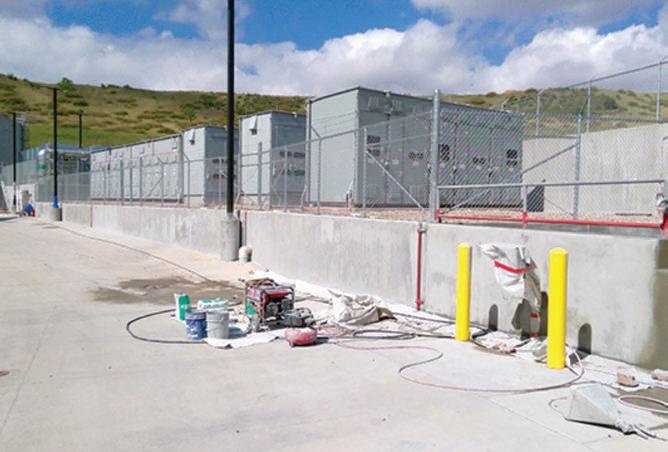


























President: Ir. Prof. Dr. Jeffrey Chiang Choong Luin
Deputy President: Ir. Yau Chau Fong
Vice Presidents:
Ir. Prof. Dr. David Chuah Joon Huang, Y.Bhg. Dato’ Ir. Wan Nazari Wan Jusoh, Ir. Dr. Bernard Lim Kee Weng, Ir. Prof. Dr. Tan Chee Fai, Ir. Prof. Dr. Lau Hieng Ho, Ir. Yeong Chin Chow, Simon, Ir. Abdul Razak Yakob
Honorary Secretary: Ir. Chen Harn Shean
Honorary Treasurer: Ir. Prof. Dr. Wong Yew Hoong
Immediate Past President: Ir. Prof. Dr. Norlida Buniyamin
Past Presidents:
YBhg. Datuk Ir. Prof. Ow Chee Sheng, Y.Bhg. Academician Tan Sri Dato’ Ir. Prof. Em. Dr. Chuah Hean Teik, Y.Bhg. Dato’ Ir. Dr. Lim Chow Hock, Ir. Dr. Tan Yean Chin, Ir. Ong Ching Loon
Civil Representative: Ir. Tu Yong Eng
Mechanical Representative: Ir. Ng Yong Kong
Electrical Representative: Ir. Mohd. Aman Hj. Idris
Structural Representative: Ir. Dr. Tan Kuang Leong
Chemical Representative: Ir. Kim Kek Seong
Other Disciplines Representative: Ir. Dr. Dhakshyani Ratnadurai
Multimedia Representative: Ir. Assoc. Prof. Dr. Lai Khin Wee
Women Engineers Representative: Ir. Dr. Syuhaida Ismail
Young Engineers Section Representatives: Mr. Lim Yiren, Mr. Darshan a/l Balasubramaniam, Ms. Ong Ye Shian, Mr. Chuah Pei Lim, Mr. Teoh Chi Yang
Council Members:
Ir. Sharifah Azlina Raja Kamal Pasmah, Ir. Ts. Dr. Wan Syakirah Wan Abdullah, Ir. Dr. Mui Kai Yin, Ir. Shamil Abu Hassan, Ir. Ts. Wan Rizaluddin Abdullah Wan Ali, Ir. Dr. Aidil Chee Tahir, Ir. Dr. Angelia Liew San Chuin, Ir. Prof. Dr. Zuhaina Zakaria, Ir. Begum Irdawati Dowlad Rahuman, Ir. Chong Chee Yen, Ir. Khoo Chee Min, Ir. Ahmad Rafidi Mohayiddin (casual vacancy for Ir. Abdul Razak Yakob), Ir. Dr. Chan Swee Huat, Ir. Alex Looi Tink Huey, Ir. Sukhairul Nizam Abdul Razak, Y.Bhg. Dato’ Ir. Ting Chek Choon, Ir. Dr. Norashikin M Thamrin, Ir. Lee Cheng Pay, Datuk Ir. Chin Tet Fu @Willy, Ir. Ts. Gs. Br. Dr. Zarabizan Zakaria, Ir. Choo Lay Guat, Ir. Dr. Siow Chun Lim, Ir. Assoc. Prof. Dr. Leong Kah Hon, Ir. Ts. Dr. Sara Lee Kit Yee, Ir. Chan Wah Cheong, Ir. Dr. Marianah Masrie
Council Members by Invitation: Datuk Ir. Ho Hon Sang, Dato’ Ir. Ahmad Sabirin Arshad, Ir. Dr. Sanjayan
K.V. Velautham
Branch Chairman
1. Penang : Ir. Dr. Lee Choo Yong
2. Southern : Ir. David Puen Ming Shen
3. Perak : Ir. Dr. Tiah Oon Han
4. Pahang : Ir. Harzah Mazni Ramli
5. Kedah-Perlis : Ir. Jamaluddin Abdullah
6. Negeri Sembilan : Ir. Richard Khoo Nee Keong
7. Kelantan : Ir. Hj. Nik Burhanuddin Nik Yusoff
8. Terengganu : Ir. Zakaria Abdullah
9. Melaka : Ir. Lim Su Hian
10. Sarawak : Ir. Dr. Angelia Liew San Chuin
11. Miri : Ir. Meheron Selowara Joo
12. Sabah : Datuk Ir. Ts. Mohd Yaakob Hj. Jaafar
Chairman: Ir. Prof. Dr. Lau Hieng Ho
Vice Chairman: Ir. Wan Rizaluddin Abdullah Wan Ali
Secretary: Ir. Assoc. Prof. Dr. Hum Yan Chai
Chief Editor: Ir. Prof. Dr. Lau Hieng Ho
Principal Bulletin Editor: Ir. Wan Rizaluddin Abdullah Wan Ali
Principal Journal Editor: Ir. Prof. Dr. Teo Fang Yenn
Chairman Webportal: Ir. Assoc. Prof. Dr. Hasril Hasini
Resource Centre Chairman: Ir. Tay Siang Hui
Committee Members:
Ir. Lee Chang Quan, Ir. Lau Tai Onn, Ir. Yee Thien Seng, Ir. Dr. Tan Kim Seah, Ir. Dr. Bhuvendhraa Rudrusamy, Ir. Dr. Nor Ilia Anisa Aris, Ir. Ts. Wong Chee Fui, Ir. Dr. Moey Lip Kean, Ir. Begum Irdawati Dowlad Rahuman, Ms. Michelle Lau Chui Chui, Ir. Dr. Marianah Masrie
Chief Editor: Ir. Prof. Dr. Lau Hieng Ho
Principal Bulletin Editor: Ir. Wan Rizaluddin Abdullah Wan Ali
Committee Members:
Ir. Alex Looi Tink Huey, Ir. Dr. Tan Kim Seah, Ir. Razmahwata Mohd Razalli, Ir. Prof. Dr. Teo Fang Yenn, Ir. Lau Tai Onn, Ir. Yee Thien Seng, Ms. Michelle Lau
Chui Chui, Ir. Ahmad Rafidi Mohayiddin, Ir. Lee Chang Quan, Dr. Sudharshan
N. Raman, Ir. Begum Irdawati Dowlad Rahuman
MALAYSIA
Bangunan Ingenieur, Lots 60 & 62, Jalan 52/4, P.O. Box 223, (Jalan Sultan), 46720 Petaling Jaya, Selangor Darul Ehsan. Tel: 603-7890 0130 Fax: 603-7957 7678 E-mail: sec@iem.org.my Homepage: http://www.myiem.org.my



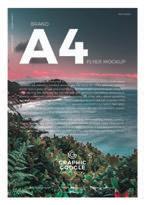


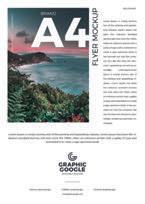



Annual Reports • Booklets • Brochures • Buntings • Business Cards
CD / DVD Replications • Calendars • Cards & Invitations • Certificates
Custom Printings • Envelopes • Folders • NCR Bill Books • Notepads
Leaflets • Letterheads • Paper Bags • Posters • Stickers • Others


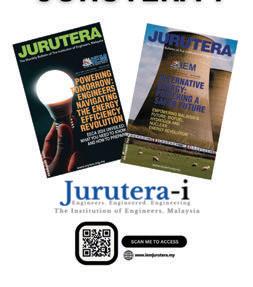
DIMENSION PUBLISHING SDN. BHD. [ 199701034233 (449732-T) ]
Level 18-01, PJX-HM Shah Tower, No. 16A, Persiaran Barat, 46050 Petaling Jaya, Selangor Darul Ehsan, Malaysia. Tel: +(603) 7493 1049 Fax: +(603) 7493 1047
E-mail: info@dimensionpublishing.com Website: www.dimensionpublishing.com
Chairman Robert Mebruer
CEO/Publisher Shirley Tham shirley@dimensionpublishing.com
Head of Marketing & Business Development
Joseph How joseph@dimensionpublishing.com
Production Editor Tan Bee Hong bee@dimensionpublishing.com
Contributing Writers
Putri Zanina putri@dimensionpublishing.com
Hanna Sheikh Mokhtar hanna@dimensionpublishing.com
Senior Graphic Designer
Sofia Hanis Mohd Uzir sofia@dimensionpublishing.com
Graphic Designer
Nicole Theng nicole@dimensionpublishing.com
Advertising Consultants
Tham Choon Kit ckit@dimensionpublishing.com
Accounts Cum Admin Executive Yong Yen Yin yenyin@dimensionpublishing.com
For advertisement placements and subscriptions, please contact:
DIMENSION PUBLISHING SDN. BHD. [ 199701034233 (449732-T) ]
Tel: +(603) 7493 1049 Fax: +(603) 7493 1047
E-mail: info@dimensionpublishing.com Website: www.dimensionpublishing.com
Subscription Department E-mail: info@dimensionpublishing.com
JURUTERA MONTHLY CIRCULATION: OVER 50,000 MEMBERS
Submission or placement of articles in JURUTERA could be made to the:
Chief Editor THE INSTITUTION OF ENGINEERS, MALAYSIA (IEM)
Bangunan Ingenieur, Lots 60 & 62, Jalan 52/4, P.O. Box 223 (Jalan Sultan), 46720 Petaling Jaya, Selangor. Tel: +(603) 7890 0130 Fax: +(603) 7957 7678 E-mail: pub@iem.org.my Website: http://www.myiem.org.my
JURUTERA is published and printed monthly by Dimension Publishing Sdn. Bhd.
PUBLICATION DISCLAIMER
The publication has been compiled by both IEM and Dimension with great care and they disclaim any duty to investigate any products, process, services, designs and the like which may be described in this publication. The appearance of any information in this publication does not necessarily constitute endorsement by IEM and Dimension. There is no guarantee that the information in this publication is free from errors. IEM and Dimension do not necessarily agree with the statement or the opinion expresssed in this publication.
COPYRIGHT
JURUTERA Bulletin of IEM is the official magazine of The Institution of Engineers, Malaysia (IEM) and is published by Dimension Publishing Sdn. Bhd. The Institution and the Publisher retain the copyright over all materials published in the magazine. No part of this magazine may be reproduced and transmitted in any form or stored in any retrieval system of any nature without the prior written permission of IEM and the Publisher. © 2025, The Institution of Engineers, Malaysia (IEM) and Dimension Publishing Sdn. Bhd.
by Ir. Prof. Dr. Ching Yern Chee Chairman, Marine Engineering & Naval Architecture Technical Division (MNATD)
AI in Marine Engineering and Naval Architecture

I am pleased to present the October 2025 edition of JURUTERA , by the Marine Engineering & Naval Architecture Technical Division of the Institution of Engineers, Malaysia (IEM), themed MarEng and NavalArc in the Era of Artificial Intelligence (AI).
The global maritime sector is undergoing rapid transformation driven by digitalisation, automation, and AI. Today, AI is no longer a futuristic concept; it is already redefining how we design vessels, manage fleets, operate ports, and ensure the safety, sustainability, and efficiency of marine systems.
In this issue, we highlight the integration of AI in Marine Engineering (MarEng) and Naval Architecture (NavalArc), showcasing cutting-edge innovations, research initiatives, and practical applications that reflect the shift toward intelligent, data-driven solutions. From predictive maintenance and smart ship design to autonomous navigation and environmental compliance, AI is playing a pivotal role in shaping maritime future.
With our strategic location and rich maritime heritage, we are in a strong position to lead and adapt to these technological advancements. We must embrace this evolution and contribute meaningfully through cross-disciplinary collaboration, continuous learning, and unwavering commitment to ethics and sustainability.
We hope this edition will inspire the engineering community to drive forward the future of marine engineering and naval architecture.
by Ir. Ts. Wan Rizaluddin Abdullah Wan Ali Principal Bulletin Editor

This issue of JURUTERA brings the world of Marine Engineering and Naval Architecture to the forefront. This discipline is central to the country’s maritime heritage and industrial growth. From ship design and offshore structures to propulsion systems and marine safety, this field continues to shape how we connect, trade, and explore across oceans.
What makes this edition timely is the intersection of marine engineering with the transformative power of Artificial Intelligence (AI). Globally, AI is redefining vessel monitoring, predictive maintenance, energy optimisation, autonomous navigation, and even climate-resilient ship design. For Malaysia, with our strong shipping, offshore oil and gas, and naval sectors, AI integration offers both opportunities and challenges.
IEM’s Marine Engineering & Naval Architecture Technical Division of has long advanced knowledge in this area, bridging academia, industry, and regulators. This issue celebrates the synergy of tradition and technology, exploring how AI can drive innovation and prepare our maritime sector for a smarter, greener, and safer future.
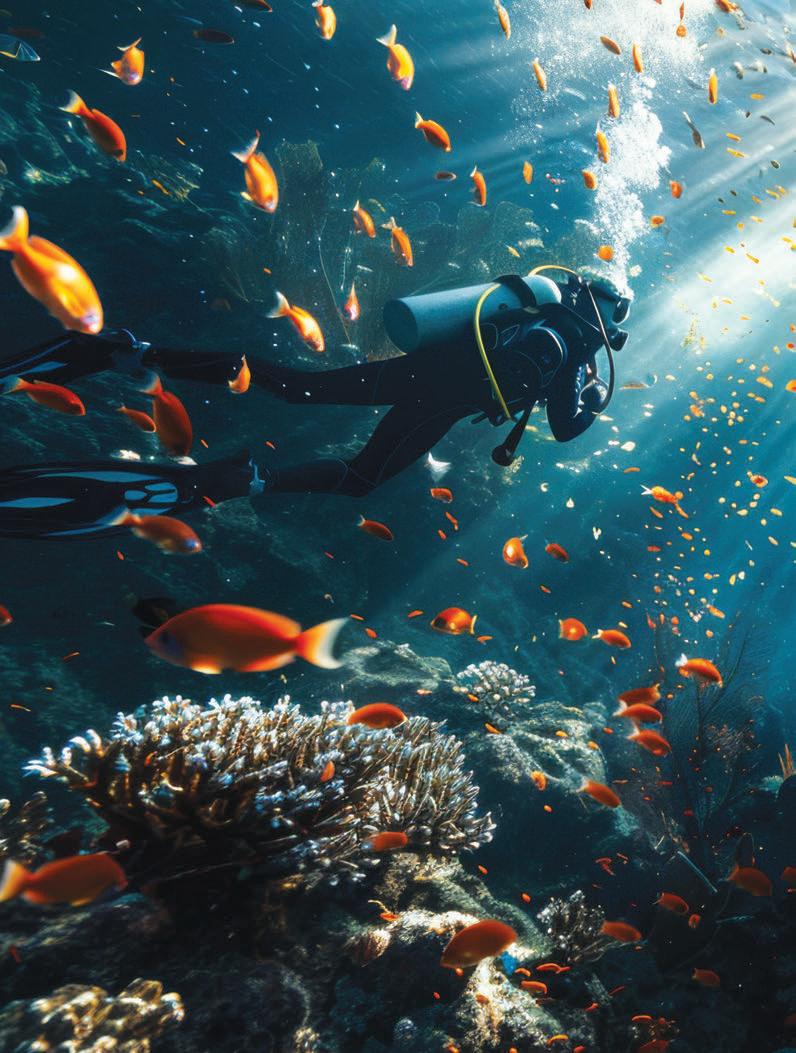
Artificial intelligence (AI) is fast becoming a game-changer in how nations manage and protect their marine resources. In Malaysia, AI is opening up new opportunities for research, innovation, and sustainable development. JURUTERA speaks to Ts. Prof. Dr. Muhammad Suzuri Hitam, Dean of the Faculty of Computer Science & Mathematics at Universiti Malaysia Terengganu, to explore how AI is being applied in Malaysia’s marine sector.
We use advanced AI techniques for the rapid estimation of coral reef distribution in Redang Island; the manual process of coral reefs...
- page 10
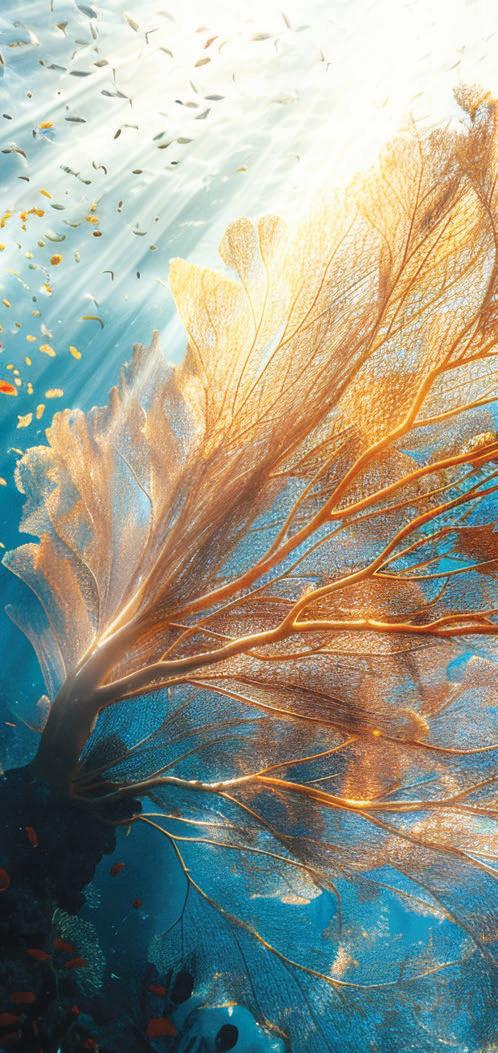
With more than 4,600 kms of coastline and some of the world’s busiest shipping lanes, Malaysia’s seas are central to its economy, culture, and ecology. Fisheries, offshore oil and gas, port operations, and shipbuilding and maintenance all rely on healthy marine systems and efficient logistics. At the same time, these industries face mounting challenges, from overfishing and climate change to pollution and rising global competition.
Artificial intelligence (AI) is emerging as a powerful enabler for the marine sector, offering smarter ways to collect, analyse, and act on data. By deploying AI, Malaysia has the opportunity to transform its marine industries while enhancing sustainability and security.
The Dean of the Faculty of Computer Science & Mathematics, Universiti Malaysia Terengganu, Professor Ts. Dr. Muhammad Suzuri Hitam, is at the forefront of this AI technological shift. He has been catalysing research and innovation in the fields of AI, image processing and computer vision as well underwater robotics. Beyond academia, his active role in public talks and technical collaboration underscores his dual commitment to both knowledge creation and community engagement.
AI applications in the marine sector require a combination of hardware and software which can perform reliably in demanding sea conditions.
“On the hardware side, Malaysia has deployed technologies such as autonomous underwater vehicles (AUVs), drones, smart buoys, and remote sensing equipment, which serve as essential data collection platforms,” says Prof. Suzuri. “These devices are often equipped with IoT sensors, high-resolution cameras, sonar, and advanced GPS systems.”
On the software front, platforms such as TensorFlow and PyTorch support machine learning, while cloud services like AWS, Azure, and Google Cloud provide scalable computing. Geographic Information Systems (GIS) help visualise marine data, and big data analytics tools enable real-time insights. Local interfaces are increasingly being adapted into Bahasa Malaysia with custom dashboards for fisheries managers and maritime enforcement officers.
“The foundation of my research work today is intelligent robotic control, the subject of my PhD,” he says. “I have applied the fuzzy-neural network techniques to manage robotic manipulators and apply current AI technology for underwater image processing in unstructured and challenging environments, such as the sea. This supports research on marine environments and the sustainability of marine life.”
Prof. Suzuri explains that in marine sector where conditions are often volatile, uncertain, complex and ambiguous, AI has become an essential tool to support effective research, rapid information gathering and analysis as well as assist in urgent decision making. The ocean environment is very dynamic and changes rapidly due to factors such as climate variability, pollution and human activities. AI enables scientists and engineers to rapidly analyse real-
time data from satellites, sensors and autonomous vehicles to detect emerging patterns and anomalies. Under such uncertain and incomplete ocean environments, AI models can be used to predict trends such as coral bleaching, fish population, turtle migration or harmful algal bloom, with improved accuracy.
He says: “We need this technology to move forward fast, uncovering hidden relationships between physical, chemical and biological parameters which are difficult for humans to identify. AI also reduces ambiguity by integrating large volumes of unstructured data into meaningful insights.”
He further concludes that “ultimately, AI empowers marine scientists and engineers to respond swiftly to environmental changes, enhance sustainability efforts and support informed decision making for ocean habitat conservation and resource management”.
He feels that we must seize the opportunity. “Because of our productivity in producing publications (audio, video, and text), we need to use AI technology. It’s very big. I think the government recognises this and is trying to provide resources for adopting AI across departments and agencies to harness data for decision-making and policy formulation,” he says.
Acknowledging that AI is fast becoming part of daily life, he stresses: “If we don’t use AI today, we
will fall far behind others. Even when I am teaching, I use AI. Knowledge is everything. AI should be used as a tool for knowledge, whether it’s for factchecking or generating alternative ideas. In Malaysia, AI use is still small-scale; we must catch up with more advanced nations to become not only users but also creators of technology and knowledge.”
Malaysia has already embarked on several AI-related projects with marine applications:
• Smart Fisheries Monitoring: AIbased image recognition systems identify fish species and sizes at landing sites, helping to enforce sustainable quotas and prevent illegal catches.
• Coral Reef Mapping: AIpowered drones and image analysis enable faster, more accurate mapping of coral health and bleaching, supporting conservation efforts.
• Port Klang Smart Port Initiatives: AI-driven logistics optimise cargo handling, vessel scheduling, and traffic flow, reducing congestion and cutting carbon emissions.
• Oil Spill Detection: AI applied to satellite imagery helps identify oil spill signatures in Malaysian waters, allowing quicker emergency response.



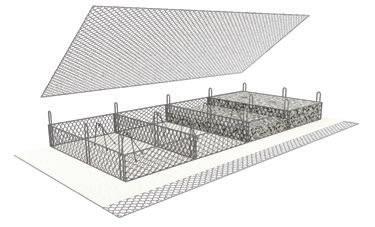



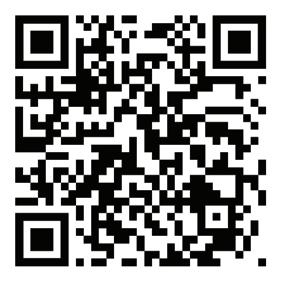
“These initiatives have delivered clear benefits — from lowering operating costs to improving biodiversity protection,” Prof. Suzuri says. “They also serve as models for integrating local expertise with international best practices.”
One of his projects involves the classification and segmentation of coral reefs data captured in video sequences. “We use advanced AI techniques for the rapid estimation of coral reef distribution in Redang Island; the manual process of coral reefs, which is time consuming and laborious, has now become automated and with rapid results. The students carried out the work as part of their research project with the collaboration of an expert from the Institute of Oceanography & Environment from UMT. This project is still on-going from time to time to further improve the techniques.”
Of particular interest, he says, is research in coral bleaching. “We’re trying to track recurring coastal infections, analyse the data, and use it to support coral rescue. This is vital for sustaining marine life.”
AI is set to play an even greater role in predictive and autonomous operations. Prof. Suzuri foresees that Remotely Operated Underwater Vehicles (ROVs) will be used more extensively in the study of underwater environments, particularly for underwater environment monitoring. “In the past, we developed an ROV at UMT but the project could not proceed further due to financial limitations as well as challenges in hardware construction and equipment limitation,” he explains. “Autonomous Underwater Vehicles (AUVs) are something we need to develop and we do have the technological background to undertake such projects. However, it will require huge investments. Although it is very challenging, this is something we hope to push for further.”
For now, much of his team’s efforts remain focused on coral reef monitoring and estimation as well as

turtle recognition. But the broader evolution of AI will encompass predictive analytics for fish stock assessments, sea floor mapping, and predictive carbon credit estimation. Autonomous drones and vessels will enable continuous monitoring of marine protected areas, freeing manpower for higher-level tasks. In aquaculture, AI-driven precision feeding systems can reduce waste and increase yields. Meanwhile, ports are expected to adopt digital twin technologies, simulating operations in real time to enhance efficiency. The rollout of 5G and edge computing will enable faster offshore data processing, crucial for time-sensitive decision-making in both research and commercial activities.
The benefits of AI in the marine sector are clear, as pointed out by Prof. Suzuri.
• Enhanced monitoring and enforcement of illegal fishing and pollution control.
• Improved efficiency in logistics, port management, and resource allocation.
• Faster, data-driven decisions for marine conservation and disaster management.
• Lower operating costs through automation and predictive maintenance.
• Strengthening Malaysia’s competitiveness in the global maritime industry. However, Prof. Suzuri admits there are drawbacks such as:
• High initial costs for hardware, software, and system integration.
• Dependency on skilled manpower, with current shortages in AI and marine data expertise in Malaysia.
• Risk of over-reliance on technology, which may fail under extreme weather or cyberattacks.
• Data privacy and sovereignty concerns, especially when relying on foreign cloud platforms.
• Possible displacement of traditional jobs in fisheries and port operations if reskilling is not prioritised.
Prof. Suzuri says there is immense potential for AI to modernise Malaysia’s marine industries.
• Shipbuilding & Ship Repair: Predictive maintenance using AI can anticipate equipment failures, reducing downtime in shipyards such as those in Lumut and Labuan. AI-assisted design tools can optimise hull shapes for fuel efficiency.
• Ship Operation (Navigation): AI-based navigation systems can process radar, sonar, and weather data to enhance safety and efficiency, particularly in busy shipping lanes such as the Straits of Malacca. Semiautonomous vessels may gradually complement human navigation.
• Port Operations: Ports such as Klang and Tanjung Pelepas can benefit from AI-driven cargo handling, automated customs checks, and predictive vessel scheduling to ease congestion.
• Offshore Operations: In oil and gas, AI can improve drilling safety by predicting equipment stress and seabed conditions. In renewable energy, AI can monitor offshore turbine efficiency and anticipate maintenance needs.
• Safety & Security: AI-enabled surveillance with drones and smart cameras can strengthen maritime border patrols, combat illegal fishing, and detect piracy. Real-time anomaly detection can flag suspicious vessel movements.
• Environmental Monitoring & Control: AI can process satellite and underwater sensor data to track oil spills, coral bleaching, algal blooms, and waste dumping. In the South China Sea and marine parks in Sabah, for instance, this supports biodiversity protection.
“Together, these applications can enhance Malaysia’s competitiveness as a maritime nation while strengthening its environmental stewardship,” he says.
Despite the promise, says Prof. Suzuri, our marine sector faces hurdles in adopting AI.
• High capital costs for advanced hardware such as autonomous vessels and underwater vehicles.
• Skills gaps in AI engineering, marine data analytics, and systems integration.
• Data limitations, with incomplete or fragmented datasets and restricted access to real-time information.
• Infrastructure gaps, particularly offshore connectivity and limited high-speed internet in coastal areas.
• Resistance to change among traditional operators in fisheries, ports, and shipyards.
• Regulatory and ethical concerns related to cybersecurity, data sovereignty, and international compliance.
To overcome these challenges, he suggests government incentives and grants, skilled talent pipelines through universities and Technical and Vocational Education & Training (TVET) institutions, shared data platforms, expanded 5G and satellite coverage, and stronger public-private partnerships to reduce costs.
Prof. Suzuri emphasises the importance of our universities and research institutions in bridging the gap between AI research and practical applications.
• Conducting applied R&D projects with industry partners, such as AI-based fishery monitoring systems.
• Establishing marine-AI testbeds for real-world trials.
• Providing specialised training in marine informatics, data science, and AI.
• Promoting interdisciplinary collaboration across marine biology, engineering, and computer science.
• Acting as knowledge transfer hubs, publishing case studies and offering consultancy for SMEs.

He highlights the need for academic findings to inform public policy.
“We must bridge the gap between marine research and the application of research findings. We publish papers but, in reality, how does this actually benefit the community? As researchers, we have to be with the community and not in the classroom all the time,” he says.
“We must have the funding for external collaborations, and the government must do something to get academia working with industry. We should use research data to solve problems, and engage university researchers to collect data and offer solutions on a consultancy basis.”
He highlights the role of engineers in this ecosystem: “Engineers must have their voices heard and ideas expressed in order to make an impact on policies and contribute towards national development. Engineers must utilise AI technology so that the huge amount of data that we collect today can speak and reveal hidden stories.”
Academia-IndustryGovernment Collaboration
Prof. Suzuri says stronger collaboration across academia, industry, and government is essential to accelerate AI adoption in Malaysia’s marine domain.
• Academia can generate new solutions and train skilled talent.
• Industry can provide datasets, infrastructure, and funding.
• Government can establish policies, standards, and incentives.
Practical steps include cofunded pilot projects, data-sharing frameworks, and joint innovation hubs in major ports to test new ideas in operational environments. Such collaborations reduce duplication, build shared capacity, and ensure that AI innovations are tailored to Malaysia-specific maritime needs, from local fisheries to global shipping lanes in the Straits of Malacca.
AI is no longer a distant promise for Malaysia’s marine sector as it is already reshaping how the nation manages its seas, industries, and ecosystems. From AI-powered coral reef monitoring to smart port initiatives, the technology has shown how it can deliver efficiency, sustainability, and stronger decisionmaking.
Yet, Prof. Suzuri reminds us, the journey is only just beginning. “If we don’t use AI today, we will fall behind others. We must be not only users but also creators of technology and knowledge,” he stresses. The challenge is to balance the opportunities AI offers with the realities of cost, infrastructure, and skills. Without investment in people, data, and collaboration, the transformative potential of AI may remain underutilised.


Ts. Prof. Dr. Muhammad Suzuri Hitam
He is the Dean of the Faculty of Computer Science and Mathematics at Universiti Malaysia Terengganu (UMT). His research focuses on Artificial Intelligence, Image Processing, and Robotics Systems. He previously served as Director of UMT’s Digital Ecosystem Centre (2013-2016, 2019-2023). He has also chaired various computing and digital innovation conferences, including AWIST 2024. His work spans decision-support systems for crime prevention, image processing in underwater and trademark applications, and neural-networkbased industrial robotics. A Ph.D. graduate from the University of Leeds, he is also an active public speaker, featured notably in UMT’s Bual Bicara Profesor Series.
The path forward lies in building bridges between universities and industries, between research and policy, and between innovation and community needs. As Malaysia strengthens its digital infrastructure, invests in talent development, and fosters public-private partnerships, it is well positioned to lead in marine AI adoption. More importantly, by embedding sustainability and inclusivity into its AI strategies, Malaysia can ensure that technology serves not only economic growth but also the long-term health of its oceans and coastal communities.
In this sense, the application of AI in Malaysia’s marine domain is not merely about smarter machines or faster data processing but it’s also about charting a future where technology and tradition converge and where AI becomes an ally in protecting marine resources, securing livelihoods, and advancing the nation’s role as a responsible maritime power.
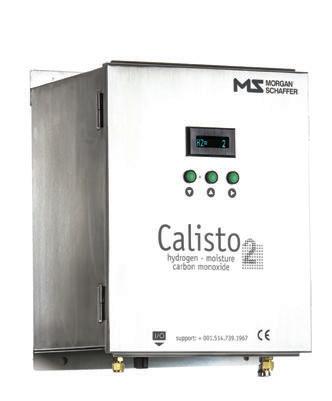
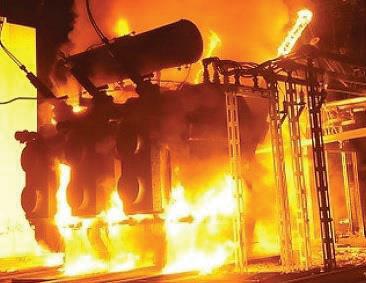















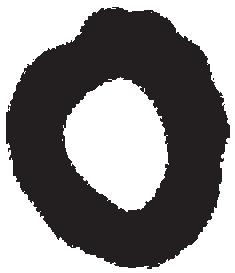















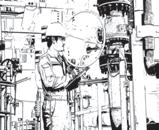








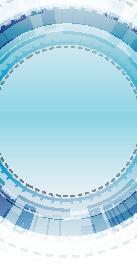
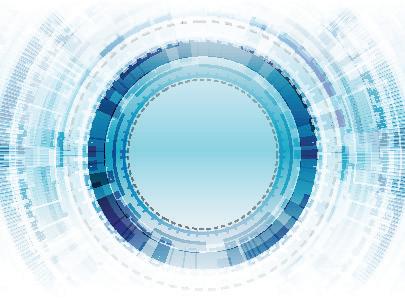




















by:

Assoc. Prof. Dr. Ahmad Faisal Mohamad Ayob
Virtual Simulator Group (VSG), Faculty of Ocean Engineering Technology, Universiti Malaysia Terengganu.
The maritime industry is navigating its most significant technological transformation since its transition from sail to steam. This new wave is powered by Artificial Intelligence (AI), a force that is reshaping every stage of the life-cycle of vessels, from the initial design to the final voyage.
This is not a distant, futuristic concept; it is the presentday reality, creating profound challenges and opportunities for the engineering community. For engineers, understanding this shift is critical. The integration of AI into marine engineering and naval architecture is a strategic imperative, driven by the dual pressures of enhancing operational efficiency and meeting stringent global environmental regulations.
For a maritime nation like ours, which is strategically positioned at the heart of global trade routes, embracing this digital tide is fundamental to securing future economic resilience and leadership3. This article explores the transformative impact of AI across the maritime domain, examines its role in vessel design, the dawn of autonomous operations and predictive maintenance, the new frontier of cybersecurity risks, and the evolution of the engineering profession itself. It should be noted that the discussions in this article are relevant at the time of writing, thereby acknowledging the rapid advancements in the topic at hand. The global trends discussed are directly relevant to Malaysia’s national ambitions, including the New Industrial Master Plan (NIMP) 2030, which aims to build a high-tech, innovation-driven economy.
The traditional ship design process, a painstaking cycle of manual calculation, model testing, and iterative refinement, is being fundamentally restructured by AI. The most profound changes are occurring in the earliest stages of naval architecture, where efficiency gains (e.g., displacement, resistance and stability calculations)
have the greatest downstream impact on the performance and profitability of a vessel. This was partly kick-started by the advancement of computational power, aiming to replace the physical/manual performance assessments via the use of analytical and predictive tools (e.g. MATLAB, Microsoft Excel), combined with the use of Computer-Aided Design software (e.g. AutoCAD), or the software that is capable of both, e.g., Maxsurf.
As the software able to communicate via built-in protocols such as Microsoft COM (Component Object Model), UDP (User Datagram Protocol), TCP/IP (Transmission Control Protocol/Internet Protocol) and so on, generative AI takes the driver’s seat to automate ship design. Trained on vast datasets containing thousands of existing, or synthetically generated hull forms via mathematical representatives such as NURBS (Non-Uniform B-Splines), these advanced algorithms can autonomously generate and evaluate novel designs at speeds and scales deemed impossible for humans.
Instead of exploring a handful of options, naval architects can now leverage AI to assess thousands of variations overnight, optimising multiple, often conflicting, objectives simultaneously. This includes balancing hydrodynamic performance, structural weight, stability, and cargo capacity to find a truly optimal solution. The results are tangible: AI-driven hull optimisation (e.g., via the use of evolutionary algorithms) has already led to a documented 15% reduction in fuel consumption compared to basis designs or training datasets.
This digital-first approach is further enhanced by the use of digital twins, or high-fidelity virtual replicas of a vessel, represented by various mathematical definitions and artificial neural network models which can be subjected to a battery of tests in simulated maritime environments before actual physical construction begins.
Engineers can analyse structural stress under extreme weather conditions, simulate hydrodynamic performance in various sea states, and refine machinery layouts, all within the computer. This practice drastically reduces the time and expense of physical model testing and mitigates the risk of discovering costly design flaws late in the construction process. The concept of digital twins is not limited to the design phase but is also utilised in later stages such as monitoring and predictive maintenance.
The paradigm shift described above redefines the role of the naval architecture. The focus moves from the manual craft of drawing lines to the strategic task of defining problems, setting constraints for the AI, and critically curating the most promising, AI-generated solutions (Figure 1). A new level of human-machine collaboration is introduced, where AI provides the breadth of computational exploration, and the human provides the depth of engineering judgment, such as design objectives, resources available and design constraints (cost, capacity, regulations).

The influence of AI goes far beyond the design office, as described in the previous section. It is set to redefine the very nature of maritime operations – the day-to-day operations. This is most evident in the development of Maritime Autonomous Surface Ships (MASS) and the widespread adoption of AI-driven systems for maintenance and efficiency, which will be discussed further in this section.
The International Maritime Organisation (IMO) has established a clear, phased roadmap for the adoption of autonomous technology, defining four distinct degrees of autonomy. This framework allows the industry to evolve incrementally, building trust and resolving regulatory challenges at each stage before progressing to fully unmanned vessels (Figure 2), summarising the levels of autonomy of a vessel from Autonomy Degree One to Four.
Central to this progression is the development of AI-powered collision avoidance systems. These systems fuse data from an array of sensors, including radar, AIS (Automatic Identification System), and optical cameras as well as employ algorithms such as Deep Reinforcement Learning, to navigate safely and in compliance with International Regulations for Preventing Collisions at Sea (COLREGs). The phased approach of the IMO framework is critical here, as it allows for the maturing of technology to handle the nuanced, human-centric language of COLREGs in a supervised environment (Degrees One and Two) before full autonomy is considered. This gradualist strategy is essential for developing the robust, evidencebased mandatory MASS Code, which is expected to enter into force by 2032 (1 July 2030 at the latest for the adoption of the mandatory Code and for entry into force on 1 January 2032).
Beyond avoiding collisions, AI optimises voyages by analysing realtime meteorological and oceanographic data to chart the most fuel-efficient routes, potentially cutting fuel consumption by up to 10%.
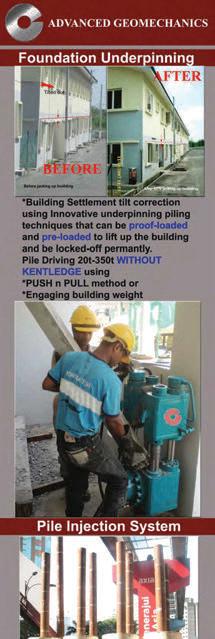


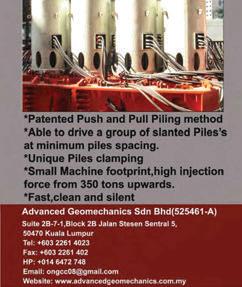






South-East Asia is emerging as a crucial testing ground for these technologies. Singapore is planning MASS trials and South Korea’s KASS project tests autonomous vessels on routes through the region, underscoring the growing maturity of technology.
In vessel monitoring tasks, the most immediate and impactful application of AI in operations is in predictive maintenance (PdM). By deploying a network of Internet of Things (IoT) sensors on critical machinery, ship operators can move away from reactive (fix when it breaks) or time-based maintenance schedules. Instead, machine learning algorithms continuously analyse realtime data on temperature, vibration, and pressure to detect subtle anomalies which are precursors to failure.
This ability to predict failures before they happen creates a virtuous cycle of benefits. It directly reduces expensive, unplanned downtime and emergency repairs. This, in turn, enhances vessel reliability and schedule integrity, boosting customer satisfaction. Furthermore, well-maintained machinery operates at peak efficiency, which lowers fuel consumption and reduces greenhouse gas emissions, helping companies meet environmental regulations.
The quantifiable gains from PdM and other AI-driven operational technologies are compelling (Table 1). Malaysian industry leaders such as MISC Berhad, are already capitalising on this, investing in startups that specialise in IIoT (Intelligent Internet of Things) and predictive AI to enhance the safety and efficiency of their fleet.
Operations
Fuel Consumption (Route Opt.) Up to 10% reduction
Vessel Waiting Times (Port Opt.) 20% reduction ETA Prediction Accuracy 37% improvement
While offering immense benefits, the increasing digitalisation and connectivity of vessels also introduce significant new risks. The convergence of Information Technology (IT) and Operational Technology (OT) — systems controlling physical machinery such as propulsion, navigation, and ballast –has expanded the cyber-attack surface dramatically.
A cyber-attack is no longer just a data breach; it is a potential marine casualty. Malicious actors, now also leveraging AI, can execute sophisticated attacks such as GPS spoofing to induce navigational errors or introduce malware through seemingly innocuous means, e.g., a USB stick, to disable engine controls.
A poll of industry professionals reveals that communication systems are perceived as the most vulnerable point of entry. This transforms cybersecurity from a back-office IT issue into a core discipline of marine engineering and safety. Marine engineers and naval architects must now design and operate vessels with the same cyber-resilience mindset that they apply to structural integrity or machinery reliability.
This new risk landscape also highlights the critical importance of the human-AI relationship. As automated systems take on more responsibility, there is a risk of human operator complacency and skill degradation. For these systems to be adopted safely, they must be trustworthy. This requires their decision-making processes to be transparent and to be understood by their human supervisors, a field known as Explainable AI (XAI). A human operator in a remote control centre or on a highly automated bridge must be able to understand why AI recommends a particular manoeuvre, especially in a high-stakes situation, to validate the decision or to intervene effectively. Building this trusted, symbiotic relationship is paramount for the future of safe maritime operations.
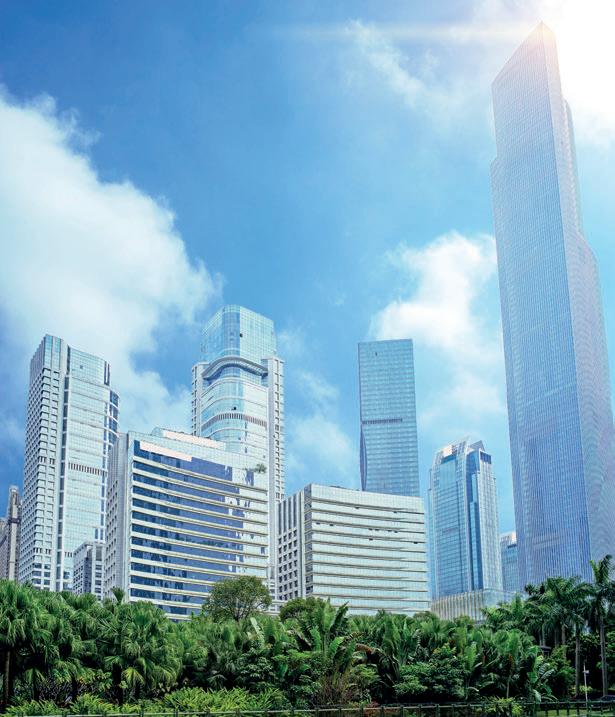
The integration of AI is catalysing a fundamental evolution in the roles and required skills of marine engineers and naval architects. Automation is steadily reducing the need for routine manual tasks, shifting the focus from hands-on intervention to high-level systems oversight, data analysis, and exception management.
In future, the maritime professional will require a hybrid skillset. Foundational knowledge of engineering principles such as hydrodynamics and structural mechanics remains indispensable. However, these must be augmented with a new suite of digital competencies that include:
• Data Science and Analytics. The ability to interpret complex datasets, understand the workings of machine learning models, and make datadriven operational and design decisions.
• AI and Systems Management. Proficiency in operating, monitoring, and troubleshooting the complex, interconnected AI-driven systems which form the new digital backbone of a vessel.





• Cybersecurity. A working knowledge of cybersecurity principles and best practices as they apply to the unique environment of maritime OT systems. This shift blurs the traditional lines between disciplines. The continuous data feedback loop — from operational data informing next-generation designs via AI, and digital twins simulating operational performance during the design phase — necessitates a more holistic, “marine systems engineer” approach.
Professionals can no longer operate in silos; they must understand the entire life-cycle of the vessel as an integrated cyber-physical system. This demands a corresponding evolution in engineering education. Institutions such as Universiti Malaysia Terengganu (UMT), Universiti Teknologi Malaysia (UTM) and UniKL’s Malaysian Institute of Marine Engineering Technology (MIMET), are pivotal in developing the talent pipeline equipped with these future-ready skills.
Charting Malaysia’s Course in the AI Era
AI is undeniably setting a new course for the global maritime industry. It is making vessels more efficient to design and build, safer, more economical to operate and more environmentally sustainable. This transformation, however, also introduces new challenges in cybersecurity and demands a new breed of digitally fluent engineers.
Malaysia is well-positioned to not only participate in this revolution but to also lead it. The nation is already taking decisive steps, with initiatives such as the development of the country’s first smart AI container port in Port Dickson, as announced in March 2024 by Negeri Sembilan Menteri Besar Datuk Seri Aminuddin Harun. It will use AI to streamline logistics, scheduling, and traffic management.
Government bodies such as the Malaysian Maritime Enforcement Agency (MMEA), are actively exploring AI to bolster national maritime security and surveillance. Corporate leaders such as MISC Berhad, are also driving innovation through strategic investments in AI startups and collaborations on digital twin and semi-autonomous vessel technologies.
The opportunity for Malaysia lies in integrating these elements – its strategic location, robust shipbuilding sector, world-class ports, global shipping leaders, and strong technical universities – into a cohesive AI-maritime ecosystem.
By fostering innovation across this entire value chain, we can transition from being a user of technology to being a global innovator. For IEM engineers, this is a call to action: To acquire new skills, embrace new technologies, and lead the charge in navigating Malaysia towards a future as a premier, high-tech maritime nation.

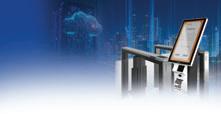

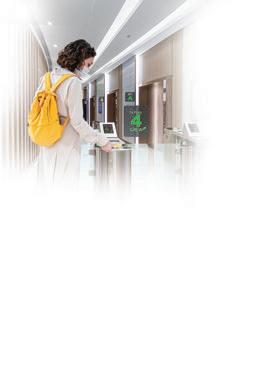
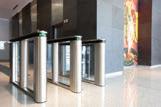



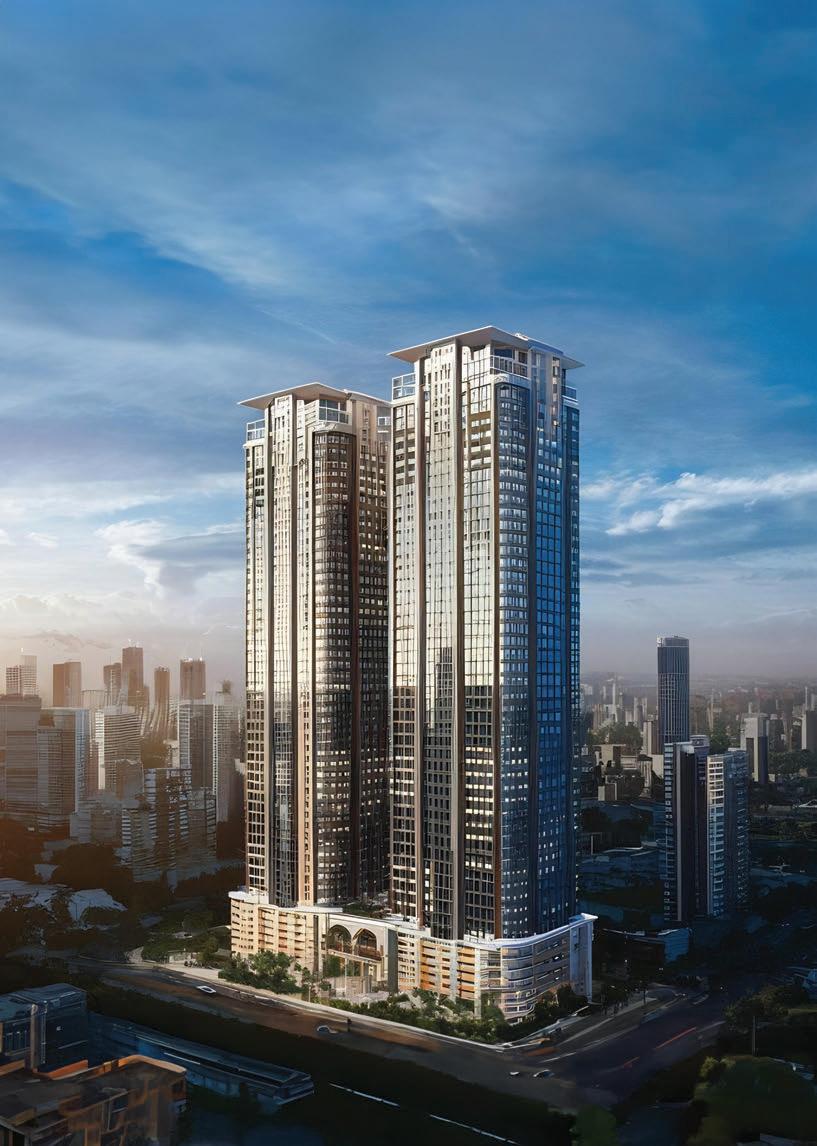
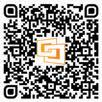








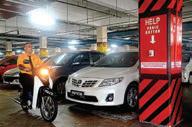



by:

Ts. Prof. Dr. Mohd Rizal Arshad
His primary area of expertise is underwater system technology, with a focus on marine robotics and advanced sensing methods.
Coral reefs represent one of Earth’s most complex and valuable ecosystems, supporting 25% of marine biodiversity while protecting coastlines from erosion1. For engineers, these underwater “cities” present a fascinating systems challenge that combines fluid dynamics, materials science, and robotics.
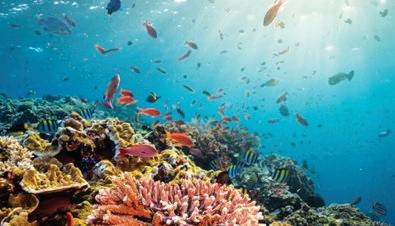
The fundamental engineering problem involves monitoring, analysing, and repairing delicate biological structures in a dynamic, corrosive environment where visibility is limited and access is challenging. With climate models predicting catastrophic reef loss by 2050, the engineering community is responding with technological solutions2. These innovations range from advanced sensor networks to autonomous repair systems, all designed to operate in one of Earth’s most demanding environments. Figure 1 shows a healthy coral reef colony and its inhabitants.
From the perspective of system engineering, coral bleaching represents a cascading failure with clear
parallels to industrial systems. Thermal stress acts as the primary input that disrupts the coral-algae symbiosis, a critical biological process. This leads to energy depletion, representing output failure, followed by structural degradation that mirrors material failure in engineered systems.
The secondary impacts on dependent species create a network collapse similar to infrastructure failure. Modern monitoring approaches employ distributed sensor arrays that industrial engineers will recognise as underwater IoT networks. These sensor networks integrate with satellite uplinks to create comprehensive monitoring systems covering entire reef ecosystems, functioning much like SCADA systems in industrial plants3
The application of computer vision to coral health assessment follows a workflow familiar to quality control engineers. The process begins with data acquisition using ROV-mounted cameras and hyperspectral imagers, followed by preprocessing steps that correct water column distortion and stitch images together.
Feature extraction algorithms identify individual polyps and segment colour patterns, while convolutional neural networks classify health status with increasing accuracy. Engineers have successfully adapted proven deep learning architectures for marine applications, including Mask R-CNN for coral instance segmentation4 and vision transformers for large-area classification5. Long/short-term memory networks now enable growth pattern prediction, helping conservationists anticipate future reef conditions.
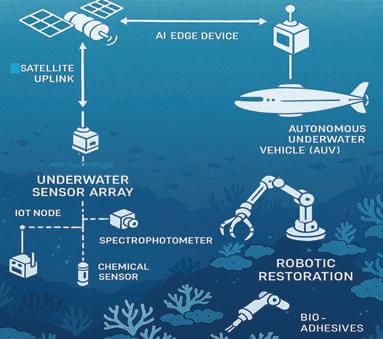
To enable real-time analysis during dives, engineers have implemented model quantization techniques that allow these sophisticated algorithms to run on edge devices with limited processing power. Figure 2 shows an example of an AI-driven integrated coral reef monitoring system.
The development of autonomous underwater vehicles for reef conservation borrows heavily from terrestrial autonomous systems. These platforms utilise simultaneous localisation and mapping (SLAM) algorithms adapted for the unique challenges of water column navigation, along with Doppler Velocity Logs for dead reckoning in environments where GPS is unavailable.
The modular payload bays allow for mission-specific tooling, much like industrial robotic systems. The end-effector design presents particularly interesting materials challenges, requiring soft robotics grippers capable of handling fragile coral fragments without damage. Engineers have developed specialised bio-adhesives for underwater bonding and pioneered the use of 3D-printed ceramic substrates with engineered porosity that mimics natural reef structures6. See Figure 3.

There have been significant advances in automated coral propagation systems which apply biotech principles to large-scale reef rehabilitation. These systems feature computer-controlled LED arrays which optimise light spectra for coral growth, along with automated water quality management systems which maintain ideal conditions. Microfluidic systems now enable precise sorting and distribution of coral larvae, increasing survival rates dramatically.
Additive manufacturing has emerged as a powerful tool for creating artificial reef structures at scale. Engineers have developed robotic clay extrusion systems for immediate deployment and algorithmically generated designs which replicate natural reef complexity. The development of recyclable concrete formulations with pH buffering capabilities represents another significant materials engineering breakthrough7




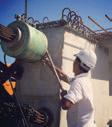
Nehemiah-OVM provides the following products and services:
- Post-tensioning solution provider
- Carpark Flat Slab
- Transfer Plate
- Beams, Box Girders
- Alternative design solutions
- Cable systems (stay cable main cable hanger)
- Bridge bearing and expansion joint
- Construction solutions (heavy lifting, ILM, etc)
- Monitoring, repairing and strengthening for structures





Nehemiah Prestress Sdn Bhd (1140945-A)
No. 45-3, Jalan PJU 5/20
The Strand, Kota Damansara 47810 Petaling Jaya
Selangor Darul Ehsan
Tel : 603-61426638
Fax : 603-61426693

Email : enquiry-pt@nehemiah-grp.com


Engineering Roadmap for Reef Recovery Technology Readiness Levels (TRLs) in marine conservation reveal both progress and opportunities8 Current AI health monitoring systems have reached TRL6, with autonomous repair systems at TRL4 and mass propagation technologies at TRL5. There are standardisation challenges which require unified data protocols, along with benchmark datasets for algorithm validation and interoperability standards for robotic systems. These developments will enable the scaling of conservation efforts to match the magnitude of the challenge. Figure 4 indicates the TRLs for marine conservation in relation to coral reefs colonies as it stands.

For the engineering community, coral reef restoration represents a grand challenge that intersects nearly every engineering discipline while offering opportunities for technological innovation, with applications beyond marine conservation. The solutions being developed, from advanced computer vision pipelines to autonomous marine robots, demonstrate how engineering expertise can address critical environmental challenges.
Engineers interested in contributing can engage with open-source reef monitoring projects9, participate in industry-academic partnerships for field testing, or explore cross-disciplinary collaborations with marine biologists. As these technologies mature, they offer the potential to not just slow down the rate of reef decline, but also to actively reverse it through engineered solutions which work in harmony with natural systems.
[1] IEEE Journal of Oceanic Engineering. (2023). “Special Issue: Emerging Technologies for Marine Conservation”. IEEE. https:// ieeexplore.ieee.org/xpl/RecentIssue.jsp?punumber=48
[2] American Society of Mechanical Engineers (ASME). (2022). “Materials Challenges in Underwater Robotics”. https://www.asme. org/topics-resources/content/materials-challenges-in-underwaterrobotics
[3] ACM Transactions on Sensor Networks. (2022). “Environmental Monitoring with Underwater Sensor Networks”. https://dl.acm.org/ journal/tosn
[4] Nature Machine Intelligence. (2023). “Review: Machine Learning Applications in Marine Ecosystems”. https://www.nature.com/ natmachintell
[5] Robotics: Science and Systems (RSS). (2021–2023). “Conference Papers on Marine Applications”. https://roboticsconference.org
[6] Marine Technology Society Journal. (2023). “Annual Technology Survey: Ocean Engineering Innovations”. https://www.mtsociety.org/ journal
[7] Wang, Z., et al. (2022). “Biomimetic 3D-Printed Coral Substrates for Marine Restoration.” Advanced Materials Technologies, 7(6). https:// onlinelibrary.wiley.com/doi/10.1002/admt.202100870
[8] European Commission. (2021). “Technology Readiness Levels: Guidance for Use in Research and Innovation Projects”. https:// ec.europa.eu
[9] CoralNet. (2023). “Open-Source AI for Coral Reef Annotation and Monitoring”. https://coralnet.ucsd.edu
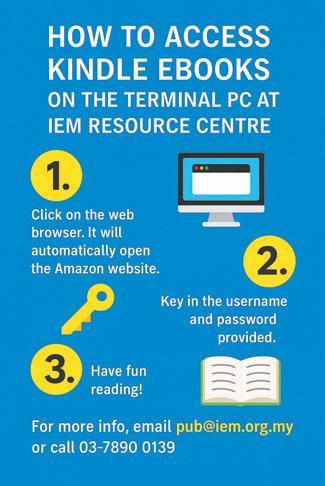



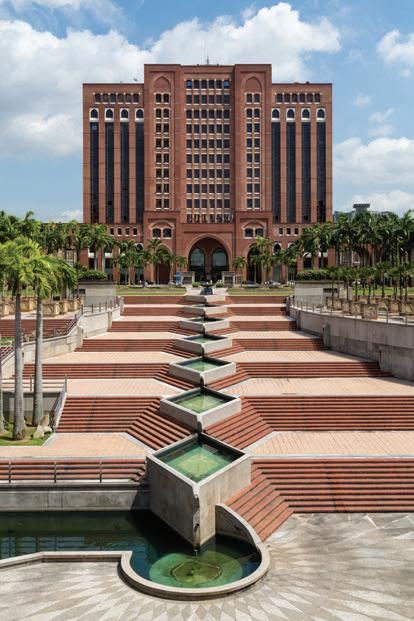



Annual Reports • Booklets • Brochures • Buntings • Business Cards
CD / DVD Replications • Calendars • Cards & Invitations • Certificates
Custom Printings • Envelopes • Folders • NCR Bill Books • Notepads Leaflets • Letterheads • Paper Bags • Posters • Stickers • Others



by:

Ir. Kanagaprakasam Rasaretnam
Senior Mechanical Design Manager at Gamuda Engineering Sdn. Bhd.
Malaysia has made significant progress in its railway and metro projects which improve connectivity, reduce traffic congestion, and boost urban development. Tunnelling is a valuable engineering technique that enables cities to expand their transportation infrastructure while minimising disruptions to the existing infrastructure.
Cross Passages (CPs) are essential components in dual-tube rail and metro tunnel systems, whether arranged in parallel or stacked configurations. These passages serve multiple functions throughout both construction and operational phases.
During the operational phase, their primary roles support normal operations, maintenance access, and emergency response needs.
During normal operation, CPs house and protect technical equipment of various technical systems (e.g., electrical, mechanical, signalling, traction power, etc.). During maintenance, CPs support a safe working environment for staff.
In an emergency, CPs contribute significantly to safety by providing an escape route for tunnel
users from the incident to the non-incident tube, i.e., to a safe area, and by providing an access route for emergency response team from the safe area to the incident tunnel.
CPs between rail tunnels are typically spaced at intervals of 244m, in accordance with the National Fire Protection Association (NFPA) 130 standards, as commonly applied in Malaysia.
This article will provide an overview of the preliminary assessment and proposal to increase the CP spacing of 244m in the modern metro. Relevant international standards and guidelines, typically referred to in tunnelling projects in terms of CP spacings are shown in Table 1.
Table 2 outlines the CP spacings adopted in various rail and metro projects around the globe, including those currently under construction.
The distance between CPs in rail tunnels is determined by several key factors as listed below:
a) Regulatory guidelines and codes (e.g. NFPA 130, EU standards, AS 4825).
b) Fire Life Safety Provisions, such as fire detection and suppression systems, smoke control and ventilation, use of fire-resistant materials, emergency communication, CP design, etc.
c) Risk assessment, often based on historical data from previous tunnel incidents.
The focus is on occupant safety, which is assessed by comparing the Available Safe Evacuation Time (ASET) with the Required Safe Evacuation Time (RSET). In principle, safety is achieved when ASET is greater than or equal to RSET (ASET ≥ RSET).
See Figure 1.
ASET refers to the time duration that occupants can safely remain in a tunnel during an emergency before environmental conditions become hazardous. This is generally designed to be in the range of 15-30 minutes for rail tunnels, but the exact value depends on site-specific risk assessments and performancebased design (smoke and evacuation modelling).


RSET is calculated from the formula below:
RSET = FOS x (td + tdm + tr) + (te)
The following parameters are assumed based on best engineering practices:
• Evacuation phase/passenger movement time to point of safety, te = A travel speed of 0.42m/s is used, which is more conservative than the 0.63m/s specified in NFPA 130.
• Maximum total passenger = 1,200 persons for 4 car trains (4 doors per car).
• A packed crowd density flow rate of 1 person per second per metre.
• The 92m-long train has four cars, each with six usable doors (1.4m wide).
An ASET analysis was done on a 2,440m-long tunnel with CPs spaced at 244m and 375m. It assumes a train stops roughly in the middle of the tunnel because of a fire in the rear car, making it impossible to evacuate through the rear door. Refer to Figures 2 and 3.
The passenger evacuation will be taken at the shortest and safest path, from the train to:
1. Nearest CP (Safety Point A).
2. Nearest station (Safety Point B) to be reached within 2 hours, whereby the Fire Life Safety (FLS) system is designed to operate for this duration in a worst-case emergency scenario.
All the trains in the incident and non-incident tunnels will be suspended for the safety of evacuees during the fire emergency.

The total time needed for passengers to evacuate to Safety Point A and Safety Point B for both options is summarised in Table 3.
The analysis shows that increasing the distance between CPs from 244 m to 375 m causes only a small increase in evacuation time to Safety Point A, which is still well under the safe limit of 30 minutes (ASET).
Similarly, the time for passengers to reach Safety Point B increases by only 3.8 minutes. This shows that even with wider spacing between exits, evacuation still fits within the FLS system’s 2-hour design limit, without counting any rescue efforts from operator.
Increasing the distance between CPs from 244m to 375m offers benefits such as lower construction/ operations costs, reduced risk to the ground, and easier tunnel maintenance. While evacuation time increases slightly and there are fewer exits, the total evacuation time is still well within the 2-hour safety limit, even in worst-case scenarios.
To ensure the increased spacing maintains the highest safety standards, it is essential to conduct:
• Computational Fluid Dynamics (CFD) simulations to study smoke movement and tunnel airflow during a fire.
• Pathfinder evacuation modelling to simulate how people would realistically move during an emergency.

Although NFPA 130 recommends a maximum CP spacing of 244m, stakeholders should carefully evaluate whether increased spacing can offer meaningful benefits without compromising safety. This article supports the view that greater spacing can be safely implemented while still meeting life safety objectives.
[1] National Fire Protection Association (NFPA) 130: 2017
[2] Society of Fire Engineering Society Handbook 3rd Edition 2002
[3] Society of Fire Engineering Guide to Performance Based Design 2nd Edition 2007
[4] Australian Standard 4825-2011: Tunnel Fire Safety
[5] Code of Practice for Fire Precautions in Rapid Transit Systems 2017 Edition
[6] https://en.wikipedia.org/wiki/Gotthard_Base_Tunnel
[7] https://en.wikipedia.org/wiki/L%C3%B6tschberg_Base_Tunnel
[8] https://en.wikipedia.org/wiki/Mont_d%27Ambin_Base_Tunnel
[9] https://en.wikipedia.org/wiki/New_Guanjiao_Tunnel
[10] https://en.wikipedia.org/wiki/Stuttgart_21
[11] https://en.wikipedia.org/wiki/Brenner_Base_Tunnel
[12] https://en.wikipedia.org/wiki/Channel_Tunnel
[13] https://en.wikipedia.org/wiki/Magenta_Line_(Delhi_Metro) [14] https://en.wikipedia.org/wiki/Doha_Metro [15] https://en.wikipedia.org/wiki/Sydney_Metro_West [16] https://en.wikipedia.org/wiki/Elizabeth_line [17] https://en.wikipedia.org/wiki/Airport_line,_Perth [18] https://en.wikipedia.org/wiki/City_Rail_Link
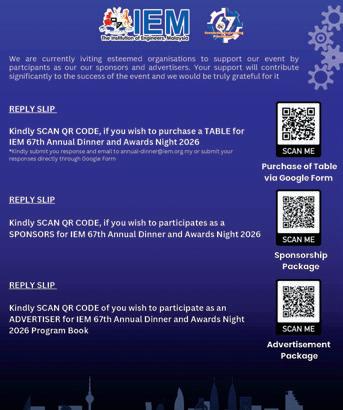


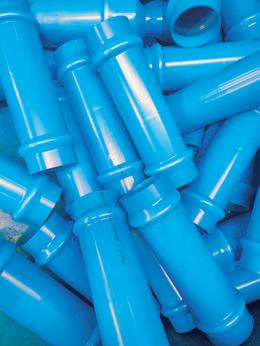

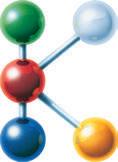
Coral reefs are one of Earth’s most biodiverse and economically valuable ecosystems, supporting approximately 25% of all marine species while providing critical coastal protection and livelihood opportunities for millions of people worldwide.
The IEM MNATD webinar series on 3 May 2025 and presented by Ir. Prof. Dr. Mohd Rizal Arshad, provided an insightful presentation focusing on the urgent need for advanced coral reef mapping technologies in the face of escalating environmental threats, especially in Malaysia.

Climate change, ocean acidification, destructive fishing practices, and coastal development have collectively placed these fragile ecosystems in unprecedented danger, with scientists estimating that we may lose 70-90% of existing coral reefs by 2050 under current climate scenarios. This alarming projection underscores the critical importance of developing comprehensive mapping systems which can accurately document reef locations, health status, and biodiversity composition to inform targeted conservation strategies (See Figure 1).
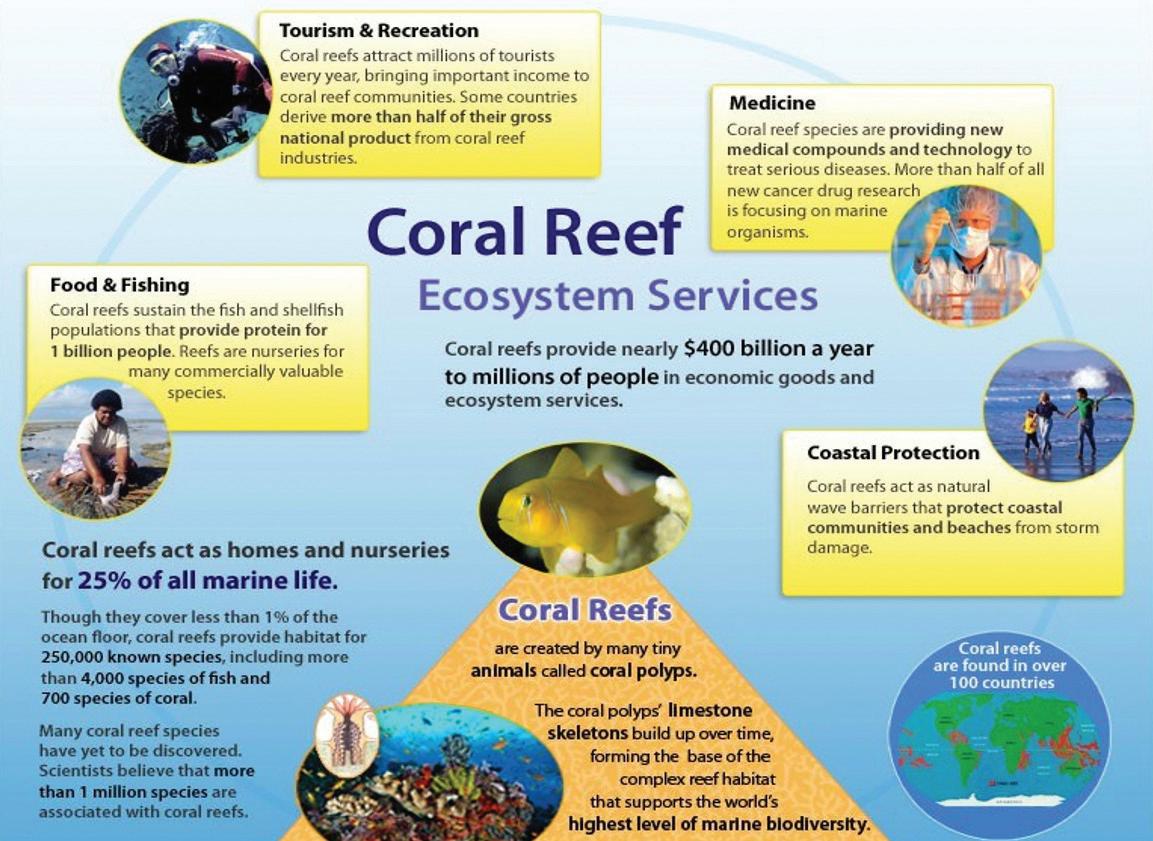

(Source: The
Dr. Mohd Rizal said traditional conservation approaches are no longer sufficient in the Anthropocene era, where the natural reef recovery process is being outpaced by the rate of environmental degradation. Modern coral conservation requires detailed baseline data which can only be obtained through systematic mapping efforts. These maps serve multiple crucial functions, such as identifying priority areas for restoration, establishing marine protected area boundaries, monitoring the effectiveness of conservation interventions, and tracking the impacts of climate change events, including mass bleaching episodes.
Dr. Mohd Rizal provided a comprehensive overview of the diverse array of technologies currently employed in coral reef mapping; each has its own advantages and limitations. Satellite-based remote sensing systems, such as NASA’s JPL Hyperion hyperspectral imaging platform, offer the broadest spatial coverage and are particularly valuable for initial reef identification and large-scale monitoring. However, these are constrained by relatively coarse resolution (typically no finer than 10 metres) and limited water penetration capabilities, especially in turbid coastal waters. The presentation showcased how recent advancements in satellite technology, including improved spectral resolution and advanced algorithms for water
column correction, are gradually overcoming some of these limitations.
For more detailed mapping, Dr. Mohd Rizal highlighted the growing use of aerial platforms, particularly drones equipped with high-resolution multispectral cameras and LIDAR systems. These can achieve submeter resolution and are particularly effective in clear, shallow waters. However, their operational depth rarely exceeds 20m, leaving deeper reef systems unmapped.
The most detailed reef mapping currently comes from in-situ technologies, including autonomous underwater vehicles (AUVs), remotely operated vehicles (ROVs), and diver-operated systems. These platforms can carry sophisticated sensor arrays including multibeam sonar, laser scanners, and high-definition photogrammetry systems capable of generating millimeter-scale 3D reconstructions of reef structures (see Figure 2).
Despite these technological advances, there are still several persistent challenges in reef mapping. Water refraction and turbidity continue to cause significant data distortion which require correction using complex post-processing algorithms. The integration of data from multiple sensors (optical, acoustic, spectral) remains technically challenging, often resulting in information gaps or inconsistencies. Perhaps most significantly, current mapping efforts are hampered by high costs and logistical complexities, particularly when working in remote locations or at greater depths.


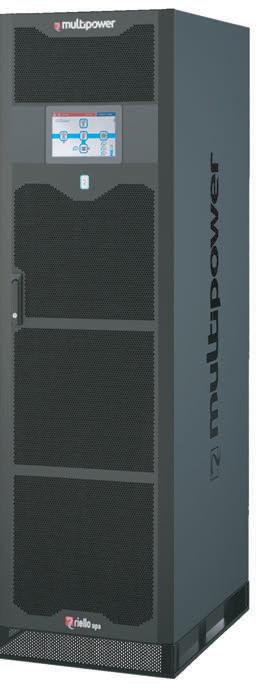

Looking to the future, several promising directions for coral reef mapping technology were outlined. One key focus was the development of permanent, automated monitoring systems which can provide continuous data streams rather than periodic snapshots. These may include networks of fixed sensors combined with AUVs that repeatedly survey designated areas.
The integration of machine learning and AI was highlighted as particularly transformative, with algorithms now being trained to not only process mapping data, but also to predict future reef health trends based on environmental variables and historical patterns.
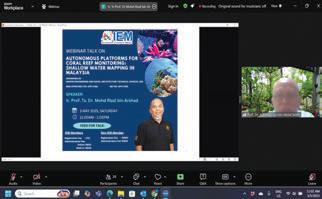
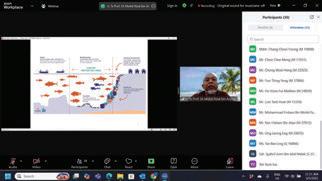
In his concluding remarks, Dr. Mohd Rizal stressed that while technology continues to advance rapidly, the ultimate success of reef conservation will depend on integrating these technical solutions with strong policy frameworks and local community engagement. Detailed maps are only valuable if they lead to concrete conservation actions and are understood by the stakeholders who depend on reef ecosystems.
Dr. Mohd Rizal ended with a call to action for engineers, marine scientists, and policymakers to collaborate more closely in developing the next generation of reef mapping systems that are not just technologically sophisticated, but are also practical, accessible, and actionable for conservation purposes.
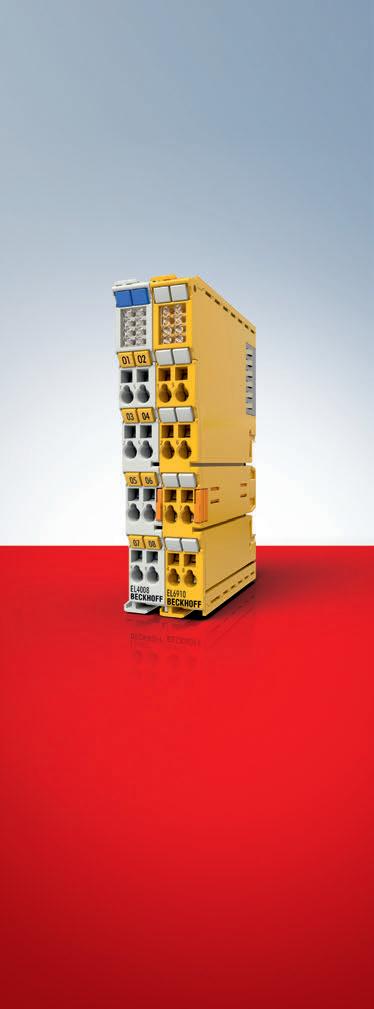
by:
The Marine Engineering & Naval Architecture Technical Division (MNATD) hosted the Sustainable & Integrated Engineering Student Research e-Poster Competition 2025 on 23 August 2025. The annual competition has become the hallmark platform for nurturing innovation, creativity, and excellence among engineering students in Malaysia. It provides young researchers with an avenue to present their work, exchange knowledge, and gain exposure to real-world engineering challenges, thereby preparing them for future leadership roles within the profession.
Since its inception, the competition has aligned closely with IEM’s mission to advance engineering knowledge and promote the professional development of future engineers. By emphasising sustainability and integrated approaches, it reflects the growing need for holistic perspectives in addressing global issues such as climate change, renewable energy, maritime resilience, green materials, and digital transformation.
Beyond technical knowledge, the competition underscores the importance of communication, teamwork, and problem-solving — competencies vital for shaping

well-rounded engineers capable of driving innovation in an interconnected world.
This year’s competition was chaired by the Chief Judge, Ir. Prof. Dr. Ching Yern Chee. At the preliminary stage, all MNATD committee members contributed to reviewing submissions and selecting the most promising entries for the final round. The final panel of judges included Dato’ Pahlawan Ir. Jasan Ahpandi Sulaiman, Ir. Mohd Izwan Mohd Noor, Ir. Muhamad Her Haji Jantan, Ir. Prof. Dr. Ab. Saman Abdul Kader, and Prof. Dr. Adi Maimun Hj. Abdul Malik. Ir. Roznan Abdul Rashid served as moderator.
The competition was structured in two stages. The preliminary round attracted numerous submissions from disciplines including naval architecture, civil engineering, materials engineering, environmental engineering, mechanical engineering, and computer science. Participants submitted an e-poster summarising their research, which was carefully assessed by the evaluation panel. From this pool, the top five individuals and top five groups were shortlisted for the grand finale.
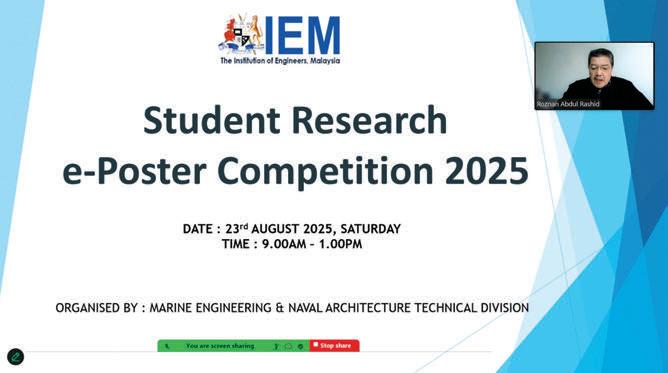
The final round was conducted virtually via Zoom, reflecting the adaptability to digital platforms and enabling participation from students nationwide. Finalists had 15 minutes to present their research, followed by a question-and-answer session with the judges. Evaluation criteria included clarity of objectives, content organisation, creativity, delivery style, time management, and responsiveness to questions. This way, participants could be assessed on not only technical quality but also on their ability to communicate complex ideas effectively, an essential skill for any future engineer.
The winners were announced after a highly engaging finale. In the Individual Category, first prize went to Nurul Izzati Darul Zaman (UTM), who also received the Best Presenter Award for her confident and articulate delivery. The second prize was awarded to Jayasri Kalaiselvan (UPM), while third prize went to Maizatul Hashikin Yasril (UPM).
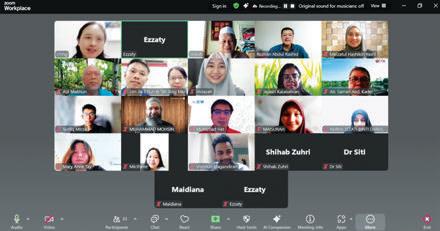
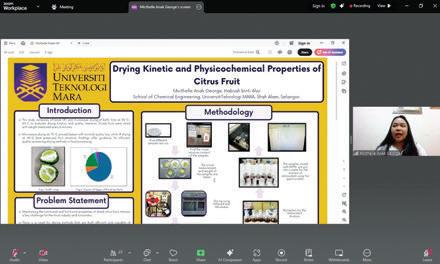
In the Group Category, the first prize was won by Tan Sing Mei and Lim Jia Chun (UniMAP). The second prize went to Muhammad Mohsin, Mary Anne Tay Ru Bing, and Putra Faliq Kaw Mohd Nooramin Kaw (UTM), while third prize was awarded to Nur Hidayah Amran, Shihab Az-Zuhri Mohd Zuki, and Muhamad Muhaymin Muhamad Zaki (UPNM).
Winners received medals and certificates and all participants received an e-certificate in recognition of their effort and commitment. Such recognition not only rewards excellence but also encourages students to engage in platforms that can help refine their research, communication, and presentation skills.
Beyond the prizes, the competition was a celebration of originality, creativity, and collaboration across engineering disciplines. Each presentation reflected the dedication of students in addressing real-world challenges with sustainable and innovative solutions. The research topics resonated strongly with global priorities in environmental sustainability, renewable energy systems, resource efficiency, and technological advancement, reaffirming the essential role of engineers in shaping a resilient and sustainable future.
The event was also a valuable platform for interaction among students from diverse institutions. Through presentations and feedback sessions, participants had the opportunity to learn from one another, share perspectives, and build professional networks. These exchanges not only broadened technical knowledge
Screenshots taken during the competition
but also fostered collaboration, an attribute crucial for addressing the complex, multidisciplinary challenges of today.
The Sustainable & Integrated Engineering Student Research e-Poster Competition 2025 reaffirmed IEM’s and MNATD’s commitment to nurture the next generation of engineers. By offering a structured yet encouraging platform, the competition inspires students to push the boundaries of knowledge and practice while reinforcing the importance of sustainability in engineering. The event is testament to the dedication of both organisers and participants in advancing the engineering profession for the benefit of society.
More than just an academic contest, the competition served as an avenue for discovery, inspiration, and the cultivation of excellence among future engineers. As the nation continues to prioritise sustainable development and integrated approaches, initiatives such as this competition will play a vital role in shaping leaders who can respond to both local and global challenges. The 2025 edition has set a strong benchmark of quality and achievement and its success will undoubtedly inspire continued innovation, collaboration, and professional excellence in the years to come.

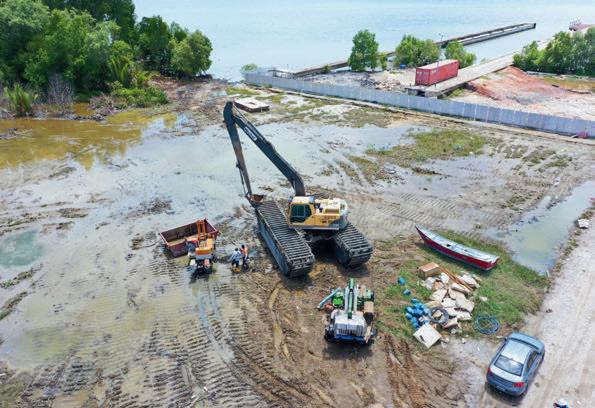

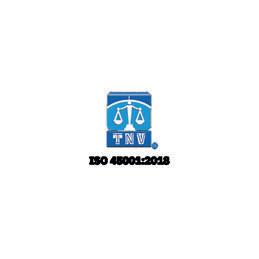
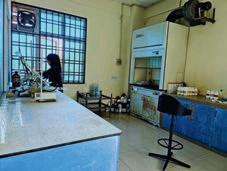



Transport engineering is far more than designing roads or managing traffic flow. It sits at the intersection of people, infrastructure, data, and policy — requiring not just technical expertise, but also the right kind of thinking.
As our cities grow, mobility patterns shift, and technology transforms how we plan and move, engineers must go beyond solving isolated problems. They need to think critically, strategically, and systemically. Here are four essential thinking skills that set high-impact transport professionals apart.

Drawing
Expert thinking is grounded in deep, domain-specific knowledge developed through years of study, field experience, and reflective learning. In transport engineering, this means having an intuitive grasp of how different elements, such as junction design, road geometry, and traffic flow, interact in practice.
For instance, when configuring signal phasing at a complex intersection, experienced engineers often draw on a mental library of similar cases, simulations, and site observations. That familiarity can help them respond more confidently and efficiently in real time.
But expert thinking also has its limits, especially when problems arise that don’t resemble anything seen before. That’s when other thinking modes become essential.

Challenging
Transport engineers are often taught to follow established guidelines, but what happens when the “standard” design doesn’t fit the context?
Critical thinking helps you stop and question assumptions. For instance, if a newly implemented pedestrian crossing feels unsafe to users, critical thinking pushes you to ask: Is the issue design-related or behavioural? Are we solving the right problem?
This mode of thinking is especially vital when experts disagree or when tried-and-tested methods fail. It enables engineers to reframe the problem, investigate deeper root causes, and develop more context-sensitive, inclusive solutions.


by: Transport Engineer
Mark Omar Mohsen
Seeing the Road Ahead
Strategic thinking is about zooming out. In transport, this means recognising that today’s infrastructure decisions will shape a city for decades. When evaluating whether to invest in a mass transport system, for example, it’s not just about capital costs or technical feasibility. It’s about how the system fits into future land use plans, economic development, climate goals, and modal integration strategies.
Strategic thinkers don’t just design for current issues, they anticipate future challenges, understand where technology and policy are heading, and help organisations future-proof their investments to stay relevant in a fastchanging mobility landscape.

Modern transport networks are complex systems influenced by numerous moving parts, including politics, funding cycles, environmental constraints, public sentiment, and now, realtime data.
Systems thinking allows transport professionals to grasp these interdependencies. For instance, integrating ridesharing zones into transit hubs isn’t just an operational challenge. It touches on curbside management, emissions targets, passenger behaviour, and even social equity.
With mobile phone data now offering granular insight into movement patterns, engineers must be capable of analysing complex datasets while accounting for economic, environmental, and political realities. That requires systems thinking.
The transport engineers of the future aren’t just technical experts. They’re strategists, problem-solvers and bigpicture thinkers. Using new tools is important, but what really matters is how the decisions fit into the bigger picture and affect real people’s journeys.
Whether you’re designing smart junctions, planning bus routes, or building policy frameworks for new authorities, mastering these thinking skills will help you stay relevant, make better decisions, and lead with purpose in a changing world.
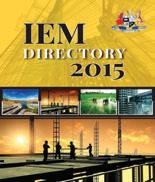
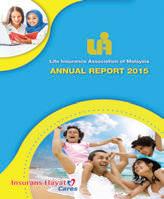





































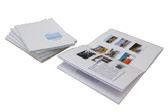



For tourists in Da Nang, Vietnam, the Golden Bridge may be the most iconic must-visit attraction, but the journey to get there is just as memorable. Riding the Bà Nà Hills Cable Car to the top is an awefull experience where engineering marvels blend seamlessly with natural beauty.
The Bà Nà Hills Cable Car holds 4 Guinness World Records of longest single-wire cable car at 5,771.61m, greatest vertical elevation rise of 1,368.93m in between stations, longest unspliced cable section at 11,587m and the heaviest cable reel used in the world at 141.24 tons.
In just 15-20 minutes, you can glide from the base station to the top, soaring above a lush jungle canopy, passing beautiful waterfalls and, if you’re early, drifting through the morning mist which makes you feel as if you’re floating among the clouds.

by:

Ir. Ts. Nur Azhani
Secretary/Treasurer of OGMTD with a passion for Reliability & Asset Management, Instrumentation & Control, and Telecommunication Systems in Oil & Gas industry.

It’s more than just a cable car ride; it’s a scenic marvel and a testament to engineering brilliance. This modern engineering structure harmonises with nature, is built in one of the most challenging environments by overcoming immense obstacles during design, planning, and construction to protect the beautiful, lush jungle.
Even transporting the materials, piece by piece through hilly terrain and assembling the structure with minimal environmental impact, are truly worthy of commendation. This impressive modern engineering structure, designed with Swiss and Austrian expertise, provides both safety and comfort to its passengers. It features up to 6 separate routes, 22 support pylons, and 94 cabins to accommodate the growing number of tourists visiting the Golden Bridge as well as Bà Nà Hills attractions and resorts.
As Bà Nà Hills continues to grow as a tourism hotspot, the cable car stands as both a symbol of modern engineering and a reminder that progress must work hand in hand with environmental preservation by maintaining strict safety standards and protecting the ecosystem.
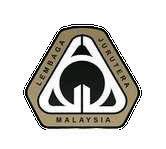


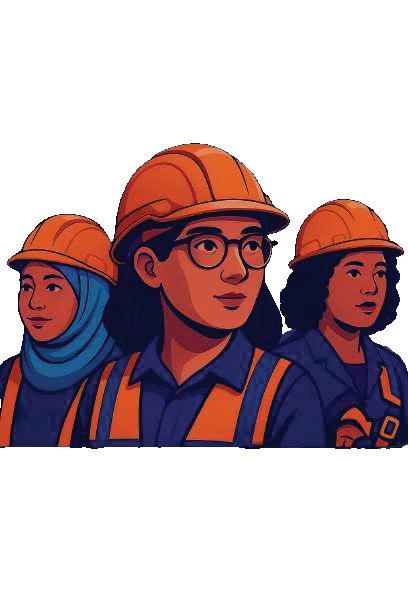


Whether it’s a unique engineering feat or a piece of art, it’s all in the eyes of the beholder. The Pipe, erected on the bank of the Neris River in Vilnius, Lithuania, was created by Vladas Urbanasvičius to mark the city’s celebration as the European Capital of Culture in 2009. Also known as Riverfront Arch, it was constructed from old pipes dug up from Russia. This striking sculpture often raises eyebrows among visitors. Questions that pop


up in one’s mind include whether it is built with a deeper meaning. Is this meant to remind us of the country’s history? Does it show the nation’s transformation? Or is it simply an audacious monument meant to provoke one’s thoughts.
Some locals are very proud of The Pipe which has become an icon for those passing through the city, as it frames the blue sky, with Gediminas Tower, visible on a distant hill.
To all Members,
Date: 22 September 2025
LIST OF CANDIDATES ELIGIBLE TO SIT FOR THE PROFESSIONAL INTERVIEW FOR THE YEAR 2025
The following is a list of candidates who are eligible to sit for the Professional Interview for the year 2025.
According to the IEM Bylaws, Section 3.8, the names listed below are published as eligible candidates to become Insitution Members, provided that they pass the Professional Interview in 2025.
If there are any Corporate Members who have objections against any candidate deemed unsuitable to sit for the Professional Interview, a letter of objection can be submitted to the Honorary Secretary, IEM. A letter of objection must be submitted within one month from the date of publication.
Ir. Chen Harn Shean IEM Honorary Secretary
NEW APPLICATION
NAME QUALIFICATION
CIVIL ENGINEERING
AHMAD ZULFARIS BIN AHMAD JALANI BE HONS (UiTM) (CIVIL, 2013)
NORHASBULLAH BIN MOHD KASIM BE (UTM) (CIVIL, 2011)
ELECTRONIC ENGINEERING
MOHAMMAD SYAFIQ BIN SAHARUDIN BE (UTM) (ELECTRICAL, 2016)
APPLICATION FOR CORPORATE MEMBER
NAME QUALIFICATION
CIVIL ENGINEERING
K THANARAJAH A/L A KANAGARATNAM BE HONS (UPM) (CIVIL, 1993)
LEE CHEN YEN ME HONS (UNI. OF SHEFFIELD) (CIVIL, 2016)
TEE AH SEONG BSc HONS (UNI. OF LONDON) (CIVIL, 2982)
MEMBER TRANSFER
MEMBERS NO. NAME QUALIFICATION
CIVIL ENGINEERING
84746 LAI KAR TING BE (UM) (CIVIL, 2016)
61194 ONG KIN BEING, ERIC BSc (NATIONAL CHENG KUNG) (CIVIL, 1982)
99021 YAP SENG HAW, BRYAN BE (UTAR) (CIVIL, 2021)
85198 YEOH SENG KEAT BE HONS (USM) (CIVIL, 2019)
ELECTRICAL ENGINEERING
101912 DAIN BIN RAZALI ME HONS (IMPERIAL COLLEGE) (ELECTRICAL & ELECTRONIC, 2017)
71405 MOHAMAD SYAHMI SYAFIQ BIN MOHD BANGSAWAN BE HONS (USM) (ELECTRICAL, 2013)
81240 NG CHOR YAU BE (UNIMAP) (ELECTRICAL ENERGY, 2014)
18869 AHMAD TAKIYUDIN BIN ABDULLAH @ IDRIS BE HONS (LIVERPOOL) (ELECTRICAL & ELECTRONIC POWER, 1997) ME HONS (UTM) (ELECTRICAL-MECHATRONICS & AUTOMATIC CONTROL, 2007)
129845 IRMA AMALIAPUTRI BINTI YUSOP BE HONS (UiTM) (ELECTRICAL, 2005)
MECHANICAL ENGINEERING
47795 LEE FEI HWEI BE HONS (UKM) (MECHANICAL, 2012) TRANSFER TO CORPORATE MEMBER
MEMBERS NO. NAME QUALIFICATION
CIVIL ENGINEERING
64642 FOO SOON YEE BE HONS (UNI. OF PORTSMOUTH) (CIVIL, 2002)
44459 HAFIZUL FAHMI BIN ROSLAN BE HONS (UiTM) (CIVIL, 2011)
70491 KARNAN A/L MUNUSAMY BE HONS (UTM) (CIVIL, 2004)
38381 LIM SEE CHAW BE HONS (UMP) (CIVIL, 2011)
95498 SIM YANGYI, NIGEL BE HONS (UNIMAS) (CIVIL, 2019) ME (UNIMAS) (CIVIL, 2022)
ELECTRICAL ENGINEERING
26871 CHANDER MOHAN SHARMA A/L MADAN MOHAN LALL BE HONS (MMU) (ELECTRICAL, 2003) MBA (UNI. OF WALES) (BUSINESS ADMINISTRATION, 2011)
ELECTRONIC ENGINEERING
76158 AHMAD ZA'IMUL UMAM BIN MUSTAFA KAMAL BE HONS (UTHM) (ELECTRONIC, 2018)
25022 HU PON NUON, KENNY BE HONS (UNIMAS) (ELECTRONICS & TELECOMUNNICATION, 2002)
41246 RAMESH KUMAR A/L PONNAIAH BE HONS (OXFORDS BROOKES UNI) (ELECTRONIC, 1996)
116730 LOW FOO WAH BE HONS (UNIMAP) (MICROELECTRONIC, 2010)
(UNIMAP) (NANOELECTRONIC, 2013)
(UM) (ENVIRONMENTAL
The institution expresses its gratitude to all who have contributed to the Wisma IEM Building Fund. IEM members and readers who wish to make a donation may do so by downloading the form from the IEM website at http://myiem.org.my or by contacting the secretariat at +603-7890 0130 / 136 for further information. The list of contributors for August 2025 is as shown in the table below:















